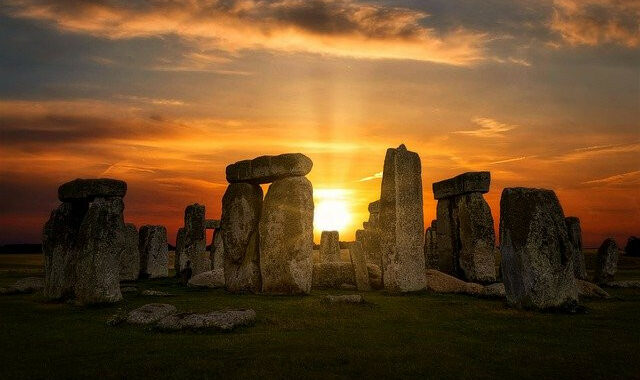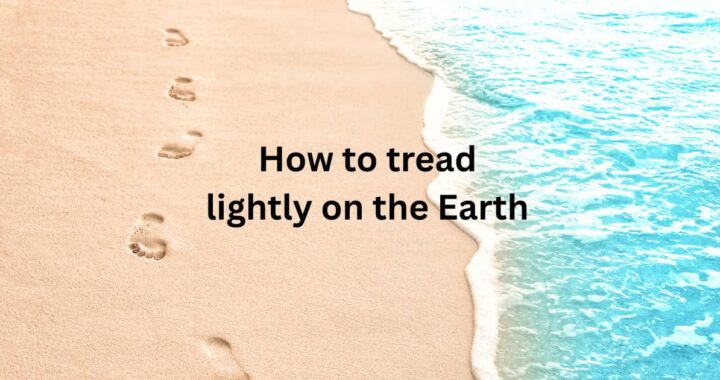One month of the year that we all look forward to is June – warm weather, lighter evenings and hopefully, a long-awaited summer holiday! But we love June in our house because It is also the month of the Summer Solstice – a ‘magical’ day called ‘the longest day of the year’ which officially marks the start of summer. Read on to find out about celebrating the Summer Solstice in the Northern Hemisphere.
Here’s the astronomy bit
Sometimes, we humans can be a little ‘slow to catch on’. It was only in 1543, that the astronomer, Nicolaus Copernicus, explained his then ‘radical’ theory of the universe in which he proposed that the earth, along with all the other planets, rotated around a central body, which was the sun. It was so controversial that it took over a century to be widely accepted, and there are those today who still dispute it.
However, we now know that the Earth revolves around the sun once every 365.25 days, and we call this a year. Each planet has its own orbit and rotates around the sun in its own ‘year’, so for example, a Martian year lasts 687 days since this is the time it takes Mars to orbit the sun.

In addition to orbiting the sun, our earth also spins on its own axis (the imaginary line running from the North Pole to the South Pole), and one full rotation on this axis takes 24 hours to complete. This is how we get our daylight and darkness, which we call day and night. When it’s day in England, it’s night in Australia, and vice versa.

That’s all very well, but it doesn’t explain why we get seasons (spring, summer, autumn and winter), or why we have some days which seem longer and have more daylight in summer, and some days that are shorter and have much less daylight (in winter).
 The key to this is the earth’s tilt. Relative to the sun, the earth is not in an upright position, but is in fact tilted at an angle of 23.5 degrees from the vertical. That’s why you often see it tilted on a globe.
The key to this is the earth’s tilt. Relative to the sun, the earth is not in an upright position, but is in fact tilted at an angle of 23.5 degrees from the vertical. That’s why you often see it tilted on a globe.
As the earth moves in its orbit around the sun, the tilt of the axis remains the same relative to the sun, so from March to October, the northern hemisphere is tilted towards the sun and we experience summer, whilst the southern hemisphere is tilted away from the sun, and they have winter.
The situation is reversed when the earth gets to the opposite side of the sun in its orbit, and it is summer in the southern hemisphere and winter in the northern hemisphere. That’s why those in the southern hemisphere can enjoy their Christmas lunch on the beach while we in the northern hemisphere build snowmen and snuggle up with hot cocoa and slippers! So it is the earth’s tilt that explains why we have seasons and why the amount of daylight we get varies throughout the year.
There’s a good video for children (and adults!) which explains the movement of the earth and why we have seasons here.

The Summer Solstice
The Summer Solstice marks the point in the year when the Earth reaches its closest inclination to the sun (which is not the same as its closest distance to the sun). This year, (2021) it will be on Monday, June 21 in the northern hemisphere and it will correspond to the Winter Solstice in the southern hemisphere. Many people around the world will celebrate both the Summer and Winter Solstice, and there are many religions over the years that have marked this special day.

The Summer Solstice is also the day that the northern hemisphere receives the most hours of daylight during the year, but the exact amount of daylight we get varies according to location. At this time of year, the North Pole has constant daylight as it is angled towards the sun, whilst the South Pole experiences continual darkness. The equator experiences a constant amount of daylight/darkness throughout the year with 12 hours of each.
At Stonehenge in Salisbury, UK, thought by some to be an ancient astronomical calendar, Midsummer’s Day will see the first rays of the sun at 04:52 and say goodbye to them at 21:26. This location will have almost 17 hours of daylight. Although, as anyone living in the UK will tell you, daylight hours are not the same as sunshine hours, but it’s comforting to know that even if we can’t see it, the sun is still out there….somewhere!

You can watch a live sunrise from Stonehenge here.
How to celebrate the Summer Solstice
Here are a few ideas of how to celebrate:
- Get up early and watch the sunrise with some friends – or even just in solitude, giving thanks for the warmth from the sun
- Find a spot to watch the sunset later in the day – why not light a campfire (safely) and toast some marshmallows
- Watch “A Midsummer Night’s Dream” – Shakespeare’s famous play about the events of one summer evening
- Decorate your house with fairies and flowers – in mythology, Midsummer was a night when fairies traditionally go up to mischief!
- Make some sun and stars decorations
- Make a basic sundial using some sticks and stones. Place a longish stick in the ground in an area of full sun. Then each hour, mark where the shadow falls using the stones. You can use one stone for one o’clock, two for two o’clock and so forth.
- Enjoy some summer food such as strawberries and cream
- Take the day off and head for the beach
- Plant some summer flowers or create a floral display based on yellows and oranges to represent the sun
- Meditate and focus on the energy we receive from the sun.
Whatever you do, have fun and enjoy it.
Related posts
Ten ways to celebrate National Simplicity Day
Gratitude and the Law of Attraction: 3 Ways To Appreciate What You Have







Hi! I went through your post and I found so much useful information there. I must say that summer is the most wonderful time to celebrate because it’s warm. I never understood this revelation of changing seasons as well as day and night. It was difficult to say why we experience the night in other countries and the day in others, but the way you explained it is very clear and straightforward. Hey! You know what? I also never knew that the martian year takes 687 days. This is great enlightenment. Thanks for sharing.
Hi Kokontala. Thanks for your kind comments and glad you learned something new. Not sure I’d want to spend a year on Mars though! 🙂 Gail
Hi, I agree with you that we should all find our ways to celebrate the solstices and I would add the equinoxes. Your post reminded me of The Golden Bough by James Frazer and then The White Goddess by Robert Graves. I recall there was a great deal of examination of ancient traditions some vestiges of which have survived into modern times, or at least into pre World War II times of Europe. Though sadly much has disappeared since then. I am intrigued by the photo you include of Stonehenge. I visited as a child and we were able to climb on the stones. Then some years ago it was mostly fenced off and you could only walk around the stones at a distance. The last time I was there must be about 28 years ago now and it was fenced off then. So it looks like they open it up to the public for the summer solstice? Is that the case? Thanks, andy
Hi Andy. Thanks for reading and leaving a comment. I remember reading some Robert Graves books as well, especially about myths and legends. I’m sure there is so much we really don’t know about all our ancient monuments. I visited Stonehenge a few years ago with my children and indeed, there are fences around and you can’t actually get into the main circle. But they do open it up in normal years on special days such as the Solstices and a few others in the year, but not at the moment due to coronavirus though. Fingers crossed that it’ll be back open soon. All the best. Gail
Hi, Gail! How are you doing?
Wow! What a great post on Summer Solstice you’ve written! Summer is definitely my favourite season of the year. As a sun lover, I’m always on the look for sunbeams and white sands to enjoy life at its most and feel happy.
The way you put things is so clear and thorough that we dive into the topic and feel like we are among the stars and planets. Thanks a lot for sharing and keep safe!
Hi Antonio, thank you so much for your kind comments. I love summer too as long as it’s not too hot! I was born in the spring so that is really my favourite season, although I love autumn too. I’m so glad you liked the post. And have a great summer (hopefully as a holiday too!)